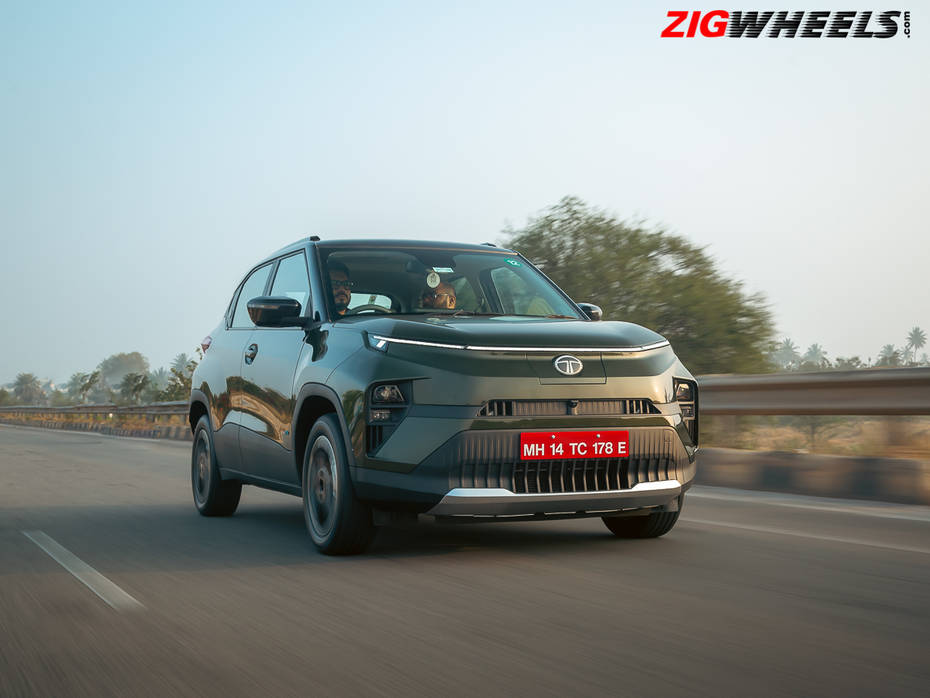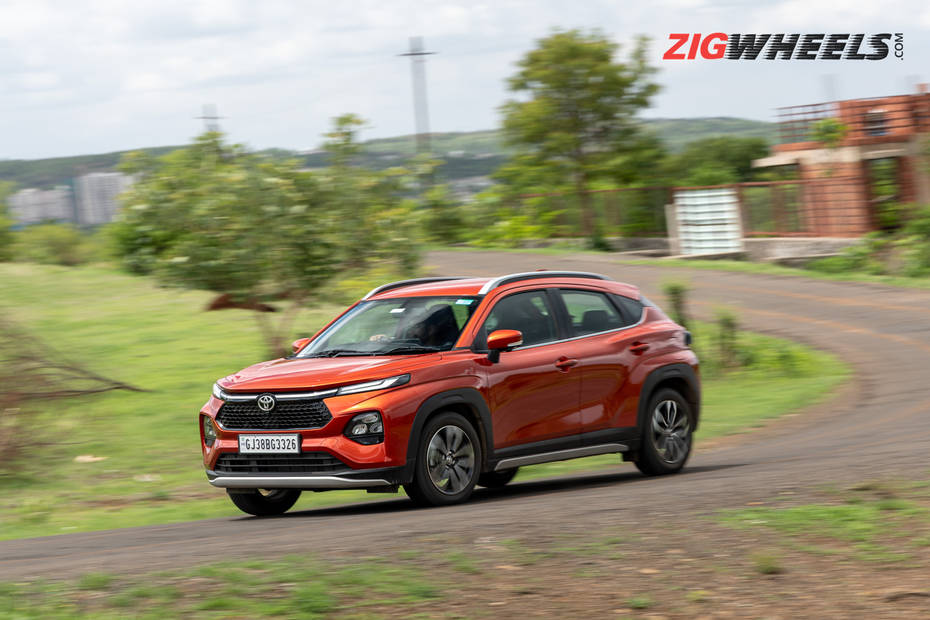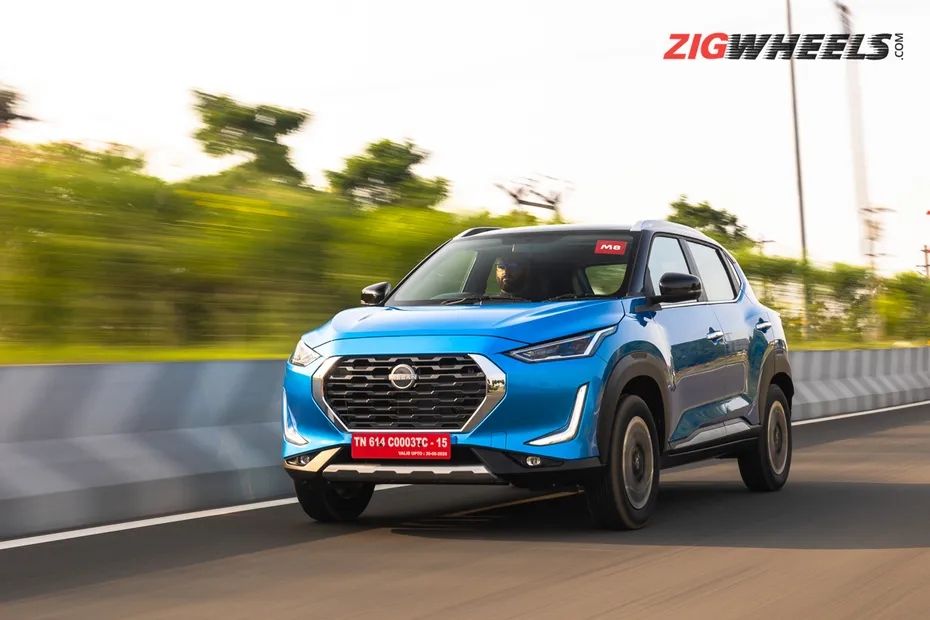
Tata Punch EV 2024 Review: More Than A Punch Electric | ZigAnalysis
- Jan 24, 2024
- Views : 27146


Despite all the range, charging, and useability limitations of electric vehicles, one thing’s for sure: their performance is superior to conventional ICE-powered vehicles. The delivery is immediate, and as a result, they not only feel exciting, but are actually quick in real life. The perfect example of that statement would be the Tata Punch EV, whose prices range between Rs 10.98 lakh and Rs 15.48 lakh, putting it right in the ballpark of subcompact SUVs like the Mahindra XUV 3XO, Toyota Taisor and Kia Sonet.
In this report, we’re going to take a look at the performance difference between the Tata Punch EV and its similarly priced sub-4m SUVs alternatives.
|
Tata Punch EV LR |
|
|
Battery |
35kWh |
|
Power |
122PS |
|
Torque |
190Nm |
|
Transmission |
NA |
Toyota Taisor/Maruti Fronx |
|
|
Engine |
1-litre three-cylinder turbo-petrol with mild-hybrid tech |
|
Power |
100PS |
|
Torque |
148Nm |
|
Transmission Options |
5-speed MT / 6-speed AT |
|
Mahindra XUV 3XO |
|
|
Engine |
1.2-litre three-cylinder turbo-petrol |
|
Power |
130PS |
|
Torque |
230Nm |
|
Transmission Options |
6-speed MT / 6-speed AT |
|
Kia Sonet |
|
|
Engine |
1-litre three-cylinder turbo-petrol |
|
Power |
120 PS |
|
Torque |
172 Nm |
|
Transmission Options |
6-speed iMT (clutchless manual) / 7-speed DCT |
|
Nissan Magnite and Renault Kiger |
|
|
Engine |
1.0-litre three-cylinder turbo-petrol |
|
Power |
100PS |
|
Torque |
160Nm |
|
Transmission Options |
5-speed MT / CVT |
|
Hyundai Venue |
|
|
Engine |
1.0-litre three-cylinder turbo-petrol |
|
Power |
120PS |
|
Torque |
172Nm |
|
Transmission Options |
6-speed MT / 7-speed DCT |
While the Mahindra XUV 3XO is the most powerful car in this list, the Tata Punch EV comes in a close second position. The likes of the Hyundai Venue, Kia Sonet, and Maruti Fronx aren’t too far behind, with very similar power figures.

So it is fair to say that, on paper, there’s not much to differentiate between them in terms of output figures. But a surprise awaits in the real-world test!
|
Tata Punch EV LR |
|
|
0-100 kmph |
9.05s |
|
Quarter mile |
16.74s@132.24kmph |
|
100-0 kmph |
44.66m (Wet) |
|
Toyota Taisor AT |
|
|
0-100 kmph |
10.98 seconds |
|
Quarter mile |
17.67s@127.17kmph |
|
100-0 kmph |
42.81m |
|
Mahindra XUV 3XO AT |
|
|
0-100 kmph |
11.21s |
|
Quarter mile |
17.72s@125.72kmph |
|
100-0 kmph |
41.03m |
|
Kia Sonet DCT |
|
|
0-100 kmph |
11.94 seconds |
|
Quarter mile |
18.53s @124.96kmph |
|
100-0 kmph |
NA / 41.72m (iMT) |
|
Nissan Magnite CVT |
|
|
0-100 kmph |
12.03s |
|
Quarter mile |
18.44s @ 120.91kmph |
|
100-0 kmph |
39.75m |
|
Renault Kiger CVT |
|
|
0-100 kmph |
11.20s |
|
Quarter mile |
18.27s @ 119.09kmph |
|
100-0 kmph |
44.71m |
|
Hyundai Venue DCT |
|
|
0-100 kmph |
11.24s |
|
Quarter mile |
18.15s@126.88kmph |
|
100-0 kmph |
42.92m |
|
Maruti Fronx MT |
|
|
0-100 kmph |
10.38 seconds |
|
Quarter mile |
17.31 seconds @ 129.14kmph |
|
100-0 kmph |
41.30m |

Easy work for the Tata Punch EV then, as it stands clear of its rivals by more than a second for the sprint from 0-100kmph. The closest to it is the Maruti Fronx with a time of 10.38 seconds, followed by the Toyota Taisor in third place. Compared to the slowest car in the list, the Magnite, the Punch EV was quicker by 2.98 seconds.

the automobile community
If you’re scratching your head and wondering how it managed to record such a clean victory, then your answer lies in the instantaneous torque of the electric motor and the uninterrupted power delivery of the electric powertrain. In comparison, the ICE vehicles had to build engine speed, reach their peak output and go through the gears constantly, which meant interruptions in their power delivery.

As a result, the Punch EV is the only car in the list to have a quarter mile time of under 17 seconds. Rest are all above the 17-second mark, with a few going beyond 18 seconds as well. Punch EV only loses out in the 100-0kmph braking test, where it finishes last in the list. But it probably would’ve done better under braking if the test conditions weren’t wet.
|
Model |
Price (ex-showroom) |
|
Tata Punch EV |
Rs 10.98 lakh to Rs 15.48 lakh |
|
Toyota Taisor |
Rs 7.73 lakh to Rs 13.03 lakh |
|
Maruti Fronx |
Rs 7.51 lakh to Rs 13.03 lakh |
|
Mahindra XUV 3XO |
Rs 7.49 lakh to Rs 15.49 lakh |
|
Hyundai Venue |
Rs 7.94 lakh to Rs 13.48 lakh |
|
Nissan Magnite |
Rs 5.99 lakh to Rs 11.27 lakh |
|
Renault Kiger |
Rs 5.99 lakh to Rs 11.22 lakh |
|
Kia Sonet |
Rs 7.99 lakh to Rs 15.74 lakh |
Owing to its electric nature and the consequent premium of initial cost of ownership, the Punch EV’s starting price is the highest in the list. Its top-spec prices are just short of the pricing of the Kia Sonet and Mahindra 3XO, but compared to the rest, it sits on the higher side only. Mind you, the Punch EV is smaller than all these cars in the list.

While it can be considered a smaller electric alternative to these sub-4m SUVs, it directly rivals the Citroen eC3.


Tata Punch EV 2024 Review: More Than A Punch Electric | ZigAnalysis

From Tata, MG, Mahindra To Porsche And Rolls Royce, 2024 Had These 12...

Tata Punch EV Vs Citroen eC3: Which Small Electric SUV Is Quicker?

Tata Punch EV vs Nexon EV: Which Tata Electric SUV Is Quicker And...

A Look At Tata Punch EV’s Real-world Performance In 3 Different...

Electric Cars Get New BIS Norms In India For Better Safety, Quality

Tata Punch EV Achieves First Sales Milestone Since January 2024 Launch

Tata Punch EV Is The Safest Car To Be Tested By Bharat NCAP, Nexon EV...

Tata Tiago EV vs Tata Punch EV: Real-world Range Comparison
 MG Windsor EV
MG Windsor EV
 Tata Tiago EV
Tata Tiago EV
 Tata Nexon EV
Tata Nexon EV
 MG Comet EV
MG Comet EV
India's largest automotive community
 Maruti e Vitara vs Tata Curvv EV: A Detailed Specification Comparison Between The Two Compact Electric SUVs
Maruti e Vitara vs Tata Curvv EV: A Detailed Specification Comparison Between The Two Compact Electric SUVs
 BYD Sealion 7 Vs Hyundai Ioniq 5: Which Premium Electric SUV Should You Buy?
BYD Sealion 7 Vs Hyundai Ioniq 5: Which Premium Electric SUV Should You Buy?
 Is MG Windsor EV The New Electric Favourite? Here Are Its Pros And Cons Explained
Is MG Windsor EV The New Electric Favourite? Here Are Its Pros And Cons Explained
 Tata Curvv EV Top Spec Vs Mahindra BE 6 Mid-spec: Which One Should You Pick For The Same Price?
Tata Curvv EV Top Spec Vs Mahindra BE 6 Mid-spec: Which One Should You Pick For The Same Price?
 Tata Punch
Rs. 5.99 Lakh
Tata Punch
Rs. 5.99 Lakh
 Tata Nexon
Rs. 7.99 Lakh
Tata Nexon
Rs. 7.99 Lakh
 Tata Curvv
Rs. 9.99 Lakh
Tata Curvv
Rs. 9.99 Lakh
 Tata Tiago
Rs. 4.99 Lakh
Tata Tiago
Rs. 4.99 Lakh
 Tata Harrier
Rs. 14.99 Lakh
Tata Harrier
Rs. 14.99 Lakh
 Mahindra BE 6
Rs. 18.90 Lakh
Mahindra BE 6
Rs. 18.90 Lakh
 Hyundai Creta Electric
Rs. 17.99 Lakh
Hyundai Creta Electric
Rs. 17.99 Lakh
 Vayve Mobility Eva
Rs. 3.25 Lakh
Vayve Mobility Eva
Rs. 3.25 Lakh
 Mahindra XEV 9e
Rs. 21.90 Lakh
Mahindra XEV 9e
Rs. 21.90 Lakh
 MG Windsor EV
Rs. 13.99 Lakh
MG Windsor EV
Rs. 13.99 Lakh